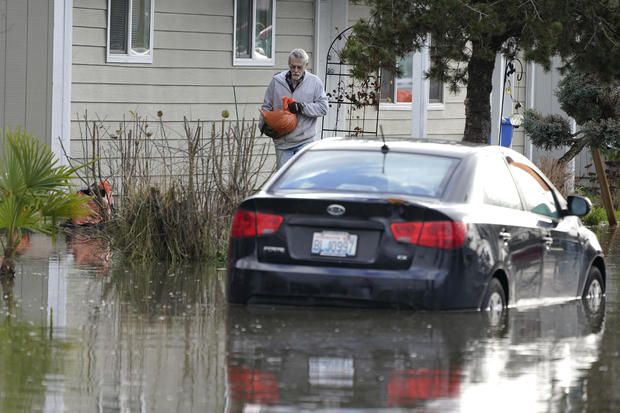Sea levels along U.S. coastlines to rise more than a foot by 2050, study projects
Sea levels along United States coastlines are projected to rise between 10 and 12 inches on average by 2050, according to an interagency report published Tuesday. The forecasted increase over the next 30 years could amount to the same rise seen over the last 100 years.
The Gulf Coast will likely see the biggest change, with sea levels expected to rise between 14 and 18 inches. The East Coast will also see levels 10 to 14 inches higher. On the other side of the country, the West Coast has the lowest predicted rise: between 4 and 8 inches.
"Sea levels are continuing to rise at an alarming rate, endangering communities around the world," NASA administrator Bill Nelson said in a statement Tuesday. "Science is indisputable and urgent action is required to mitigate a climate crisis that is well underway."
The report, titled the Global and Regional Sea Level Rise Report, is an update to findings from 2017. For this year's report, scientists from several government agencies, including the Environmental Protection Agency and the United States Geological Survey, utilized adjusted temporal trajectories and exceedance probabilities, as well as new data developed specifically for this research. They also used historical tide gauge observations, satellite data and model projections for their predictions.
The report predicted more frequent, major and destructive high tide flooding events along with taller storm surges by 2050 after scientists determined high tide flooding has been "increasingly common" over the past few years due to rising sea levels.
In 2021 alone, flooding cost the U.S. approximately $2.6 billion and caused at least seven deaths, according to the National Oceanic and Atmospheric Administration.
"Without additional risk-reduction measures, U.S. coastal infrastructure, communities, and ecosystems will face significant consequences," the study said.
Scientists say sea levels could rise above the study's projections if the rates at which oceans warm and ice from glaciers and ice sheets melt — the two primary drivers in changes to the world's average sea levels — continue to increase.
According to the NOAA, up to 90% of the planet's excess heat is absorbed by the ocean. And the seven highest levels of ocean heat content recorded by the agency have all happened within the last seven years.
NOAA administrator Rick Spinrad said the updated research serves as "a global wake-up call and gives Americans the information needed to act now to best position ourselves for the future."
"These updated data can inform coastal communities and others about current and future vulnerabilities in the face of climate change and help them make smart decisions to keep people and property safe over the long run," he said.





